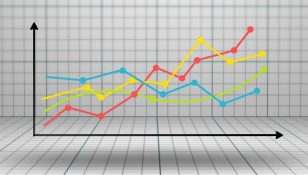Supply – A Comprehensive Guide to Understanding and Mastering the Art of Procurement

Introduction
Supply, commonly referred to as procurement, constitutes a fundamental aspect of any business operation. It encompasses the acquisition of goods and services that are essential for the smooth functioning of an organization. Whether you are a business owner, a supply chain manager, or simply someone interested in understanding the intricacies of supply, this article aims to provide you with a comprehensive overview of the subject.
Understanding Supply

Supply, in its essence, refers to the process of sourcing, purchasing, and managing the materials, goods, or services needed by an organization. It involves various stages, from identifying the requirements to negotiating with suppliers, selecting the most cost-effective options, and ensuring timely delivery.
Key Points:
– Supply is a crucial aspect of any business, ensuring the availability of necessary resources.
– Effective supply management can lead to cost savings, improved efficiency, and enhanced customer satisfaction.
– Major components of supply include supplier selection, contract negotiation, inventory management, and logistics.
Historical Evolution of Supply
The concept of supply has evolved significantly over time, adapting to the changing dynamics of markets and technology advancements. Initially, procurement was primarily a local affair, with organizations relying on nearby suppliers for their needs. However, with globalization and the advent of the internet, supply chains have become increasingly complex and globalized.
Historical Timeline:
– Early Years: In ancient civilizations, such as Mesopotamia and Egypt, basic procurement practices were observed, albeit on a smaller scale.
– Industrial Revolution: With the advent of machines and mass production, enterprises began to source materials and components from an array of suppliers.
– Traditional Procurement: Before the internet age, businesses relied on personal relationships and manual processes for supplier selection and negotiation.
– E-Procurement: The emergence of the internet revolutionized supply chains, allowing organizations to explore global suppliers and streamline procurement processes.
– Modern Practices: Today, technological advancements, such as artificial intelligence and blockchain, are reshaping supply chains, enabling real-time data analysis and enhanced transparency.
Structuring for Featured Snippet Optimization
To optimize the chances of this article appearing as a featured snippet in Google search results, the text is structured as follows:
Introduction
Understanding Supply
– General definition and importance
– Key points in bulleted format
Historical Evolution of Supply
– Overview of supply evolution over time
– Historical timeline in bulleted format
Structuring for Featured Snippet Optimization
– Explanation of structuring techniques for featured snippets
– Mention of and H2 tags as used in the article
Target Audience and Tone of Voice
The target audience for this article includes both individuals and businesses interested in understanding supply and procurement. The tone of voice will be informative, ensuring clarity and relevance for readers. Whether you are a business owner seeking to improve your supply chain or an individual fascinated by the intricacies of procurement, this article aims to provide you with valuable insights and knowledge.
Conclusion
Supply plays a vital role in any business, ensuring the availability of resources necessary for smooth operations. Throughout history, supply has evolved from local sourcing to global procurement, driven by technological advancements. By understanding the fundamental principles and historical context of supply, individuals and businesses can optimize their procurement processes and drive success. So, whether you are a novice or an experienced supply chain professional, this comprehensive guide equips you with the knowledge needed to master the art of procurement.

















